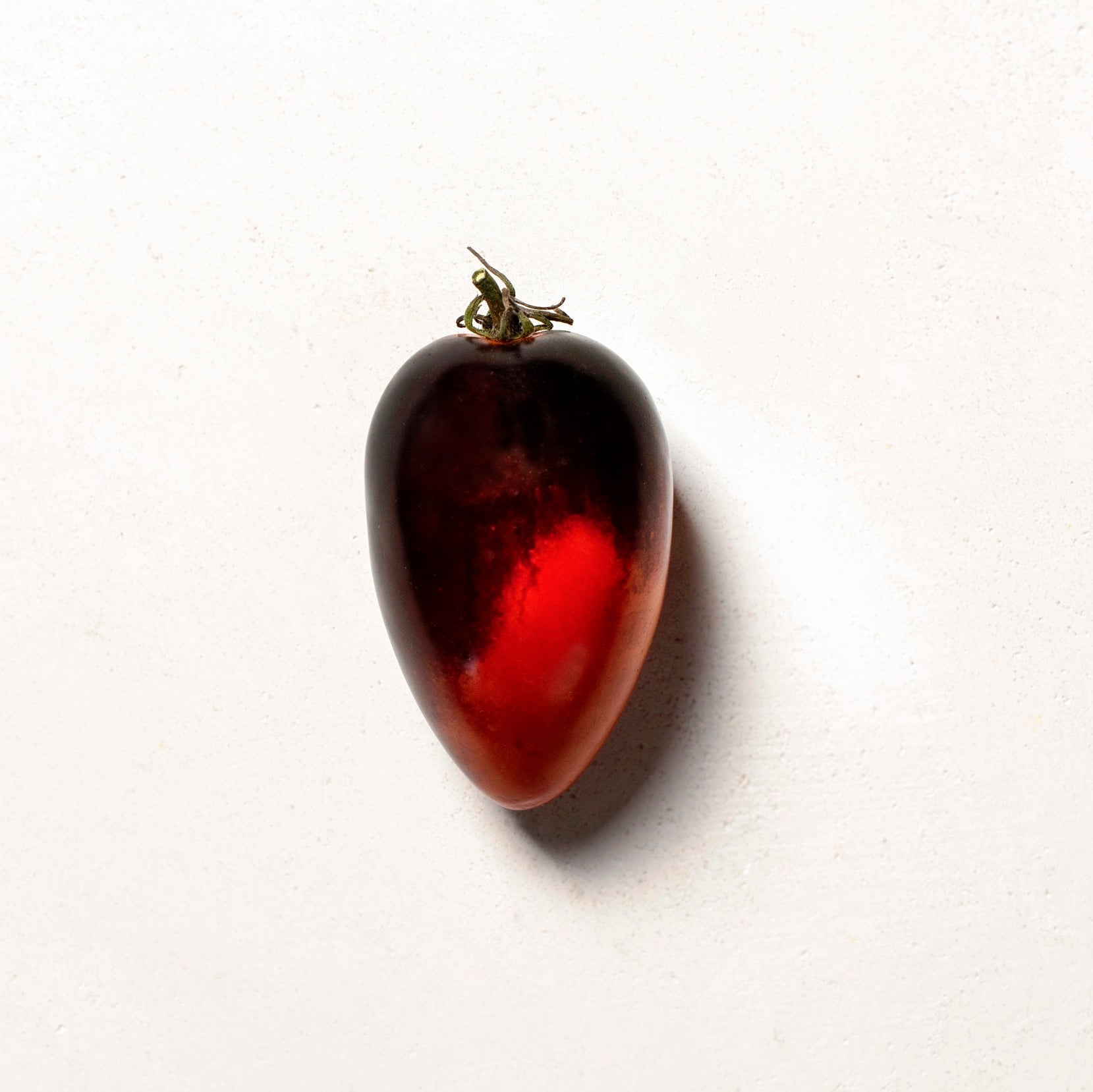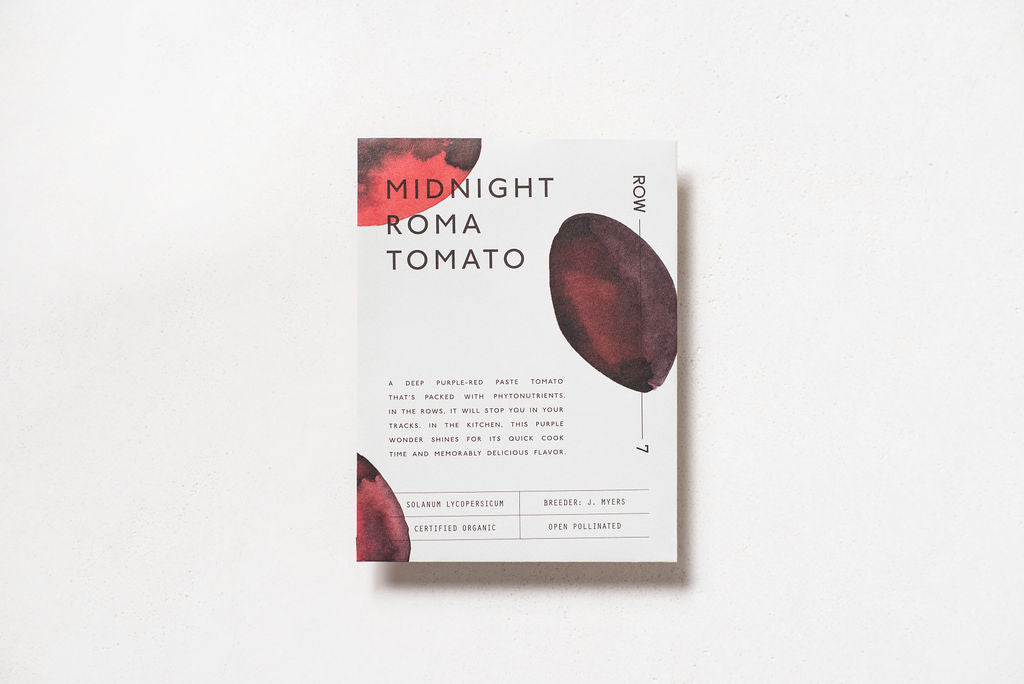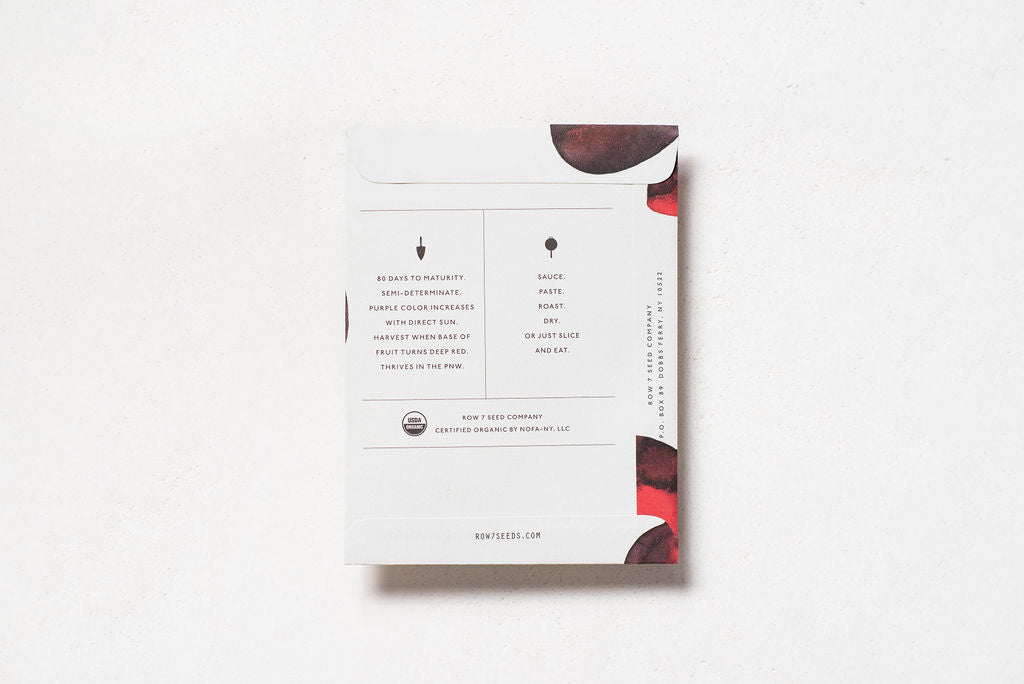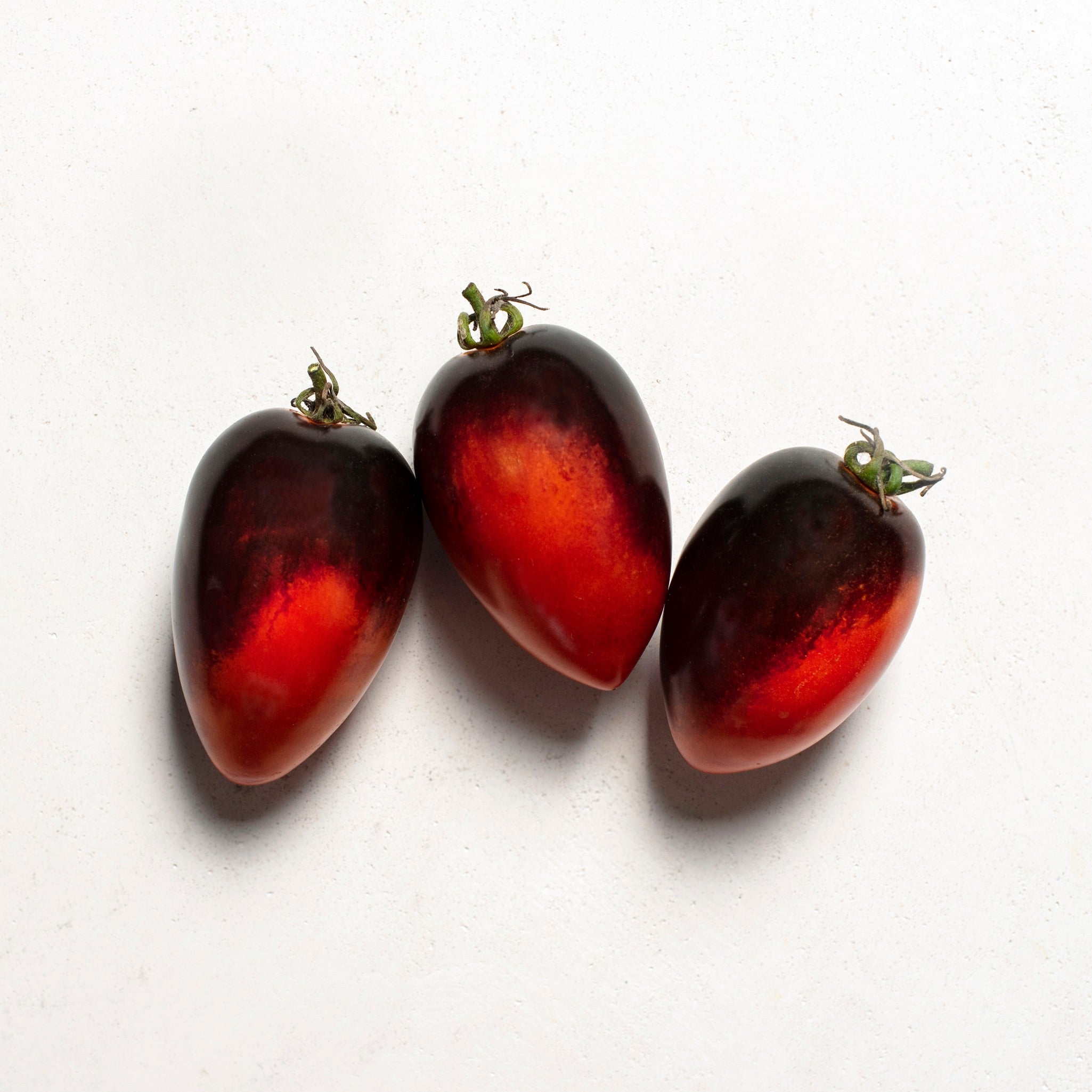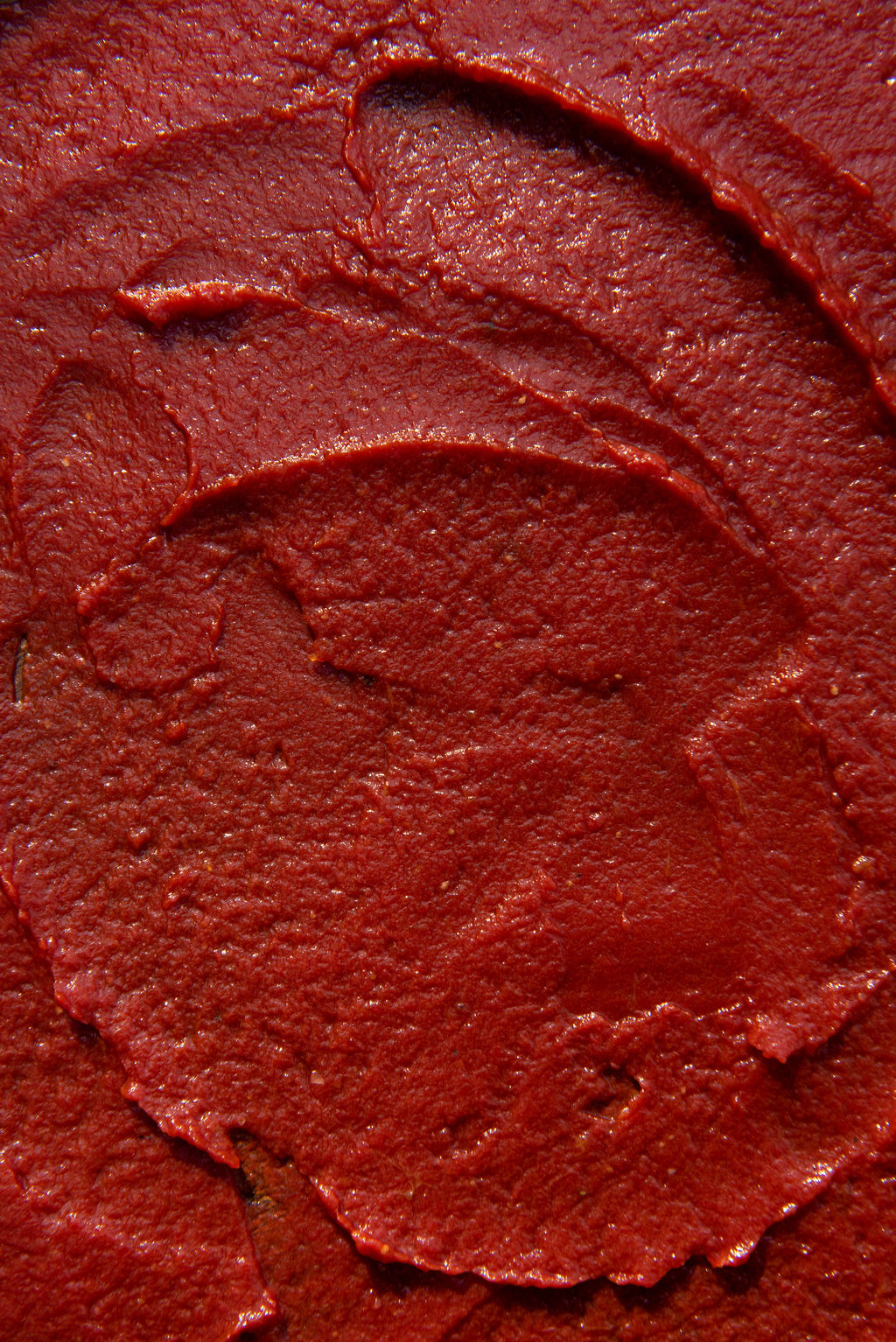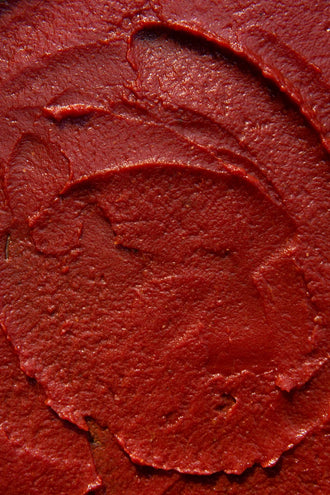This unique purple-skinned, high-antioxidant sauce tomato was developed by Oregon State University breeder Dr. Jim Myers. Jim has devoted years to breeding tomatoes for purple anthocyanins, hoping to explore the antioxidant potential of these pigments and their impact on human health. (Anthocyanins are the same compounds that give blueberries their color and antioxidant properties.) With this new variety, Myers brought the high anthocyanin trait into a plum (aka paste) tomato, the purple-pigmented skin encasing a deep red flesh ideal for processing and sauce applications.
In the rows, it will stop you in your tracks. In the kitchen, this purple wonder shines for its quick cook time and memorable flavor, producing sauces and pastes with layers of sweetness, acidity and rich umami.
Jim’s interest in breeding tomatoes for increased nutrition dates back to when he first joined Oregon State University’s breeding program in 1996. But it was Carl Jones, a graduate student and collaborator at OSU, who helped give shape to those ambitions.
While exploring the C.M. Rick Tomato Genetics Resource Center collection at UC Davis, Carl noticed purple-colored tomatoes containing wild genetics from the Galapagos Islands and Chile. Carl and Jim confirmed that the unique coloration derived from anthocyanins, a nutrition pigment in the skin absent from commercial tomatoes at the time. (The black and purple coloration of varieties like Cherokee Purple comes from pheophytin, another pigment.) Together, they identified how to select for a full expression of anthocyanins in the fruit, culminating in the release of Indigo Rose in 2012.
The success of Indigo Rose inspired Jim to explore new expressions of this trait. Jim turned his attention to the Oregon Star, a dual-purpose slicer and paste tomato developed for Oregon’s cool climate by his predecessor, James Baggett. The resulting cross between the two varieties brought new variation that pushed the bounds of the familiar. As he made selections in the field, Jim was drawn to the appearance of what is now the Midnight Roma. It’s ovular shape signaled its use as a paste tomato (though it serves as a tasty slicer as well); but its color spoke to new possibilities in flavor and nutrition.
Jim acknowledges the contributions of many other graduate students and technicians who supported the project over the years, including Peter Mes, Peter Boches, Deborah Kean, Shinji Kawai and Joel Davis. We are also grateful to the members of our chef and grower community who trialed the Midnight Roma over multiple seasons, exploring its applications in the field and the kitchen.
